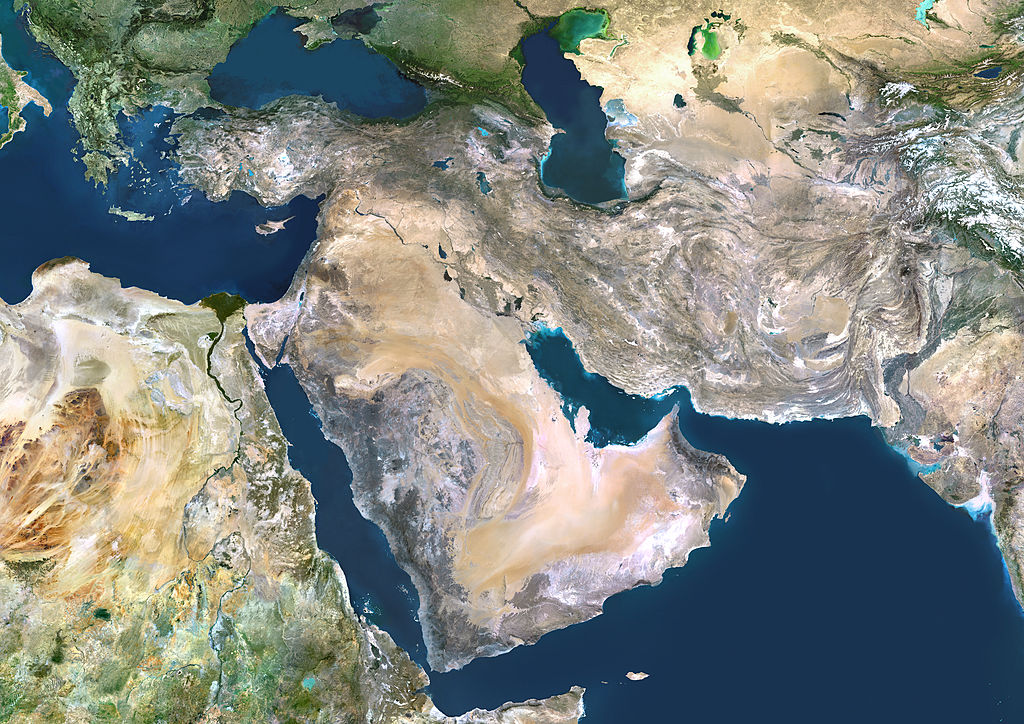The magnetic lure of strategic geography
Posted By David Millar on October 17, 2019 @ 06:00

Australia has committed a surveillance aircraft and a ship to assist in a US-led operation to ensure oil supply through the strategic Strait of Hormuz. The Persian Gulf is a critical waterway for the transport of crude oil from the Middle East to refineries in South, Southeast and North Asia.
Few Australians are aware that following the discovery of oil in Persia, now known as Iran, in 1909, the British Anglo-Persian Oil Company, later called British Petroleum, or BP for short, was established to pump oil from the oilfields to a place called Abadan Island at the head of the Gulf. An oil refinery and port were built to export oil for use by the British, in particular, the Royal Navy, which was converting its battleships from coal-fired to oil-fired. The oil supply was of such importance to Britain that the British War Office tasked the Indian government, then part of the British Empire, to make plans to secure the oilfields should war come.
War did come in 1914, and a division of the Indian army was dispatched to Mesopotamia, now known as Iraq, to ensure the supply of oil. Three months into the campaign, it became obvious that aerial reconnaissance was needed to monitor the advances of both the Turkish army and hostile Arab tribes in the region. The Indian armed forces had few aircraft and fewer aircrew, having sent their available fliers to Egypt and Britain to protect the Suez Canal and to fight on the Western Front in France and Belgium.
In February 1915, the Australian government was asked if it could provide aeroplanes and pilots to assist in defending Mesopotamia and ensuring the security of the oilfields. Australia at that stage had just five aircraft, three of which were ‘flyable’, and six pilots (soon to be seven). Because of those numbers, the government offered to provide four pilots, but no aircraft. The offer was accepted and four Australian pilots and some 40 mechanics were sent to Basra in what is now southern Iraq.
It went well to start with. The Australian pilots, flying outdated planes provided from India and Egypt, performed wonders of aerial reconnaissance and surveillance that fundamentally lifted the decision-making superiority of the commanding generals. However, as summer progressed and the temperatures approached the mid-40s, the quality of the aircraft and the conditions took their toll. Within three months two pilots were dead. A young Australian doctor and pilot, George Merz, and a New Zealander, William Burn, lost their lives after engine failure caused them to crash-land in the desert and they were murdered by local tribesmen. By December, the tiny force was reduced to one plane and one pilot; the others had crashed, been shot down or been captured and taken prisoner of war.
The story is worth remembering, if not only to honour the first Australian airman to die in war, but to ponder the reality that Australian forces will be asked to participate in security operations in the Middle East for as long as we are dependent on an oil economy and as long as we rely on a major world power to assure our national security.
There are multiple ironies at play in this story. While we may try to disengage from the Middle East, we are constantly drawn back because of the strategic significance of the geography and the significance of the oil industry. Australian forces saw service in the Middle East in World War I, World War II, Operation Desert Storm and now continuously since 2003, with the advent of Operation Iraqi Freedom.
The major security partner has changed over the past century from Britain to America, but little seems to have changed in the geopolitical reality of our dependence on oil from the Middle East. The region remains as strategically important to Australia now as it was then, whether we like it or not. Geographically, there are places on the planet that will continue to be nexuses of trade and conflict. The Gulf, the Arabian Peninsula and the Red Sea are among those places.
In 1915, the deployment of Australian air forces was not in the minds or priorities of the Australian government of the day, but the request was supported. In 2019, a little over a hundred years later, we find ourselves hoping to disengage from two decades in the Middle East—but again, in response to a request for military support in the Middle East from our major ally, we are deploying air forces.
The question for strategists, then, is whether, rather than consider defence policy from the perspective of a national and near-region defence posture, we should be looking at where the flashpoints of strategic geography are that will draw Australian forces with an inexorable gravity.
Surely, the real truth of geopolitics and strategic geography is that we are forced to consider our national security in the context of a global environment in a global economy.
Article printed from The Strategist: https://www.aspistrategist.org.au
URL to article: https://www.aspistrategist.org.au/the-magnetic-lure-of-strategic-geography/
Click here to print.